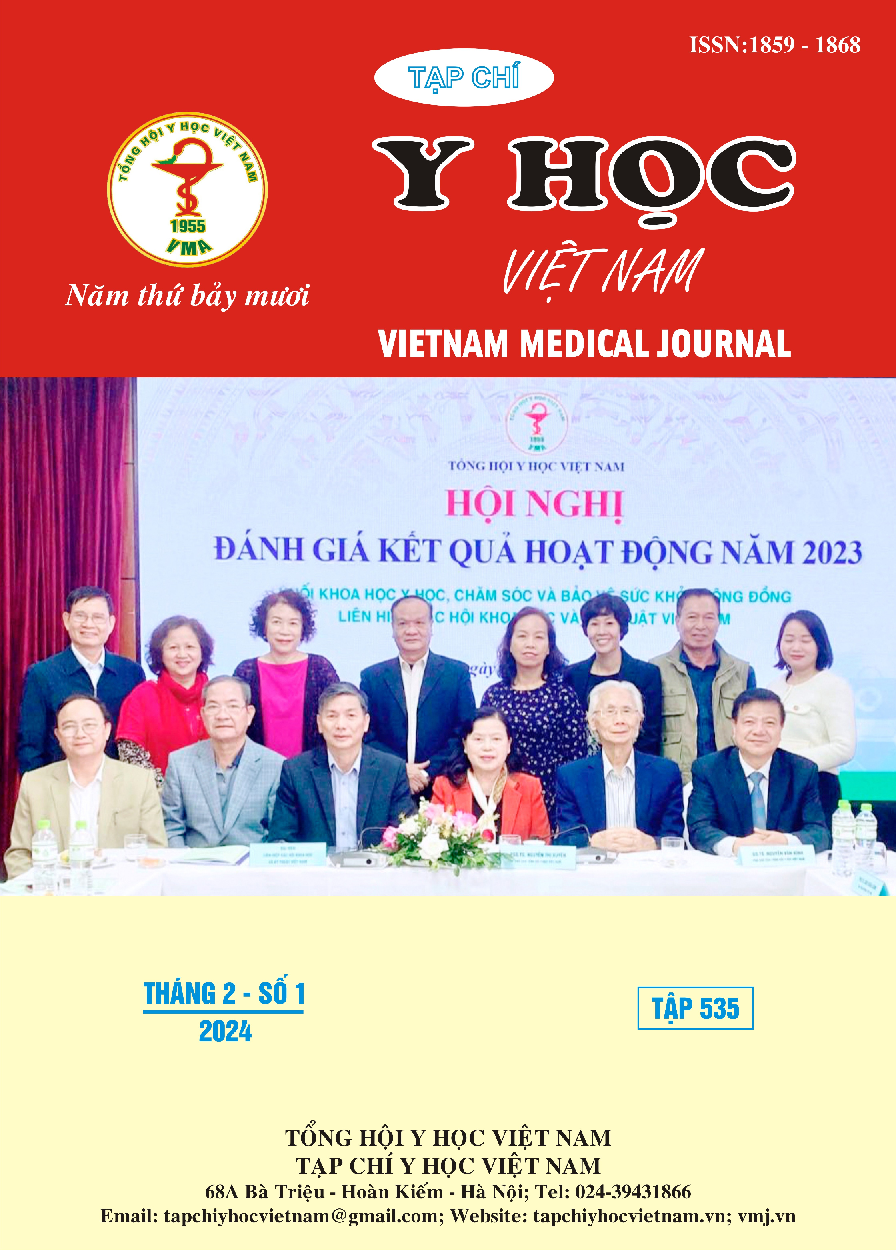TÌNH TRẠNG TỔN THƯƠNG THẬN CẤP Ở BỆNH NHÂN NGỘ ĐỘC CẤP DIQUAT
Nội dung chính của bài viết
Tóm tắt
Mục tiêu: mô tả tình trạng tổn thương thận cấp và phân tích các đặc điểm lâm sàng, cận lâm sàng của tổn thương thận cấp ở bệnh nhân ngộ độc cấp hoá chất diệt cỏ Diquat. Đối tượng và phương pháp: nghiên cứu trên 114 trường hợp ngộ độc cấp hoá chất diệt cỏ Diquat tại Trung tâm chống độc Bệnh viện Bạch Mai từ tháng 7/2021 đến 7/2023. Kết quả: tổn thương thận cấp ở bệnh nhân ngộ độc cấp Diquat thời điểm vào viện là 38,6% và cả quá trình điều trị là 76,3% (87 BN). Phân độ tổn thương thận cấp theo AKI: độ 1, 2, 3 chiếm tỷ lệ lần lượt là 12,6%; 13,8%; 73,6%. Nhóm BN tổn thương thận cấp có 69% vô niệu, Đặc điểm lâm sàng của bệnh nhân ngộ độc Diquat có AKI: rối loạn tiêu hóa (nôn, đau họng, đau bụng, ỉa lỏng) 89,6%, loét miệng 57,5%, suy hô hâp có thông khí nhân tạo 72,4%, rối loạn ý thức 54%, co giât 28,7%; thiểu niêu - vô niệu 72,0%. Đặc điểm cận lâm sàng: BC trung bình 23,88, toan chuyển hóa tăng khoảng trống anion gap, tổn thương gan cấp, tiêu cơ vân, tăng lactat. Mức độ ngộ độc nặng hơn thì tỷ lệ suy thận cao hơn, mức độ nặng của tổn thương thận tăng lên, p<0,01. Tỷ lệ tử vong ở bệnh nhân ngộ độc diquat có tổn thương thận là 74,7%. Kết luận: Tỷ lệ tổn thương thận cấp ở bệnh nhân ngộ độc cấp diquat tại Trung tâm chống độc Bệnh viện Bạch Mai là 76,3%. Sự xuất hiện tổn thương thận cấp liên quan đến liều lượng ngộ độc. Tỷ lệ tử vong ở nhóm ngộ độc cấp diquat có tổn thương thận cấp cao.
Chi tiết bài viết
Tài liệu tham khảo
2. Nguyễn Thị Dụ (2004) Định hướng chung chẩn đoán và xử trí ngộ độc cấp. Tư vấn chẩn đoán và xử trí nhanh ngộ độc câp. Nhà xuất bản Y học.
3. Hoàng Quốc Thái Bình (2022). Đặc điểm lâm sàng, cận lâm sàng và kết quả điều trị bệnh nhân ngộ độc cấp thuốc diệt cỏ Diquat, Luận văn thạc sĩ y học, Trường Đại học Y Hà Nội.
4. Jones, Giselle M and Vale, J Allister (2000), "Mechanisms of toxicity, clinical features, and management of diquat poisoning: a review", Journal of toxicology: Clinical toxicology. 38(2), pp. 123-128.
5. Magalhães, N, et al. (2018), "Human and experimental toxicology of diquat poisoning: toxicokinetics, mechanisms of toxicity, clinical features, and treatment". 37(11), pp. 1131-1160.
6. WHO. Environmental Health Criteria Programme. Environmental health criteria for paraquat and diquat. World Health Organization, Geneva, Switzerland, 1984.
7. Rudež, Josip, Sepčić, Kristina, and Sepcˇić, Juraj (1999), "Vaginally applied diquat intoxication", Journal of Toxicology: Clinical Toxicology. 37(7), pp. 877-879.


